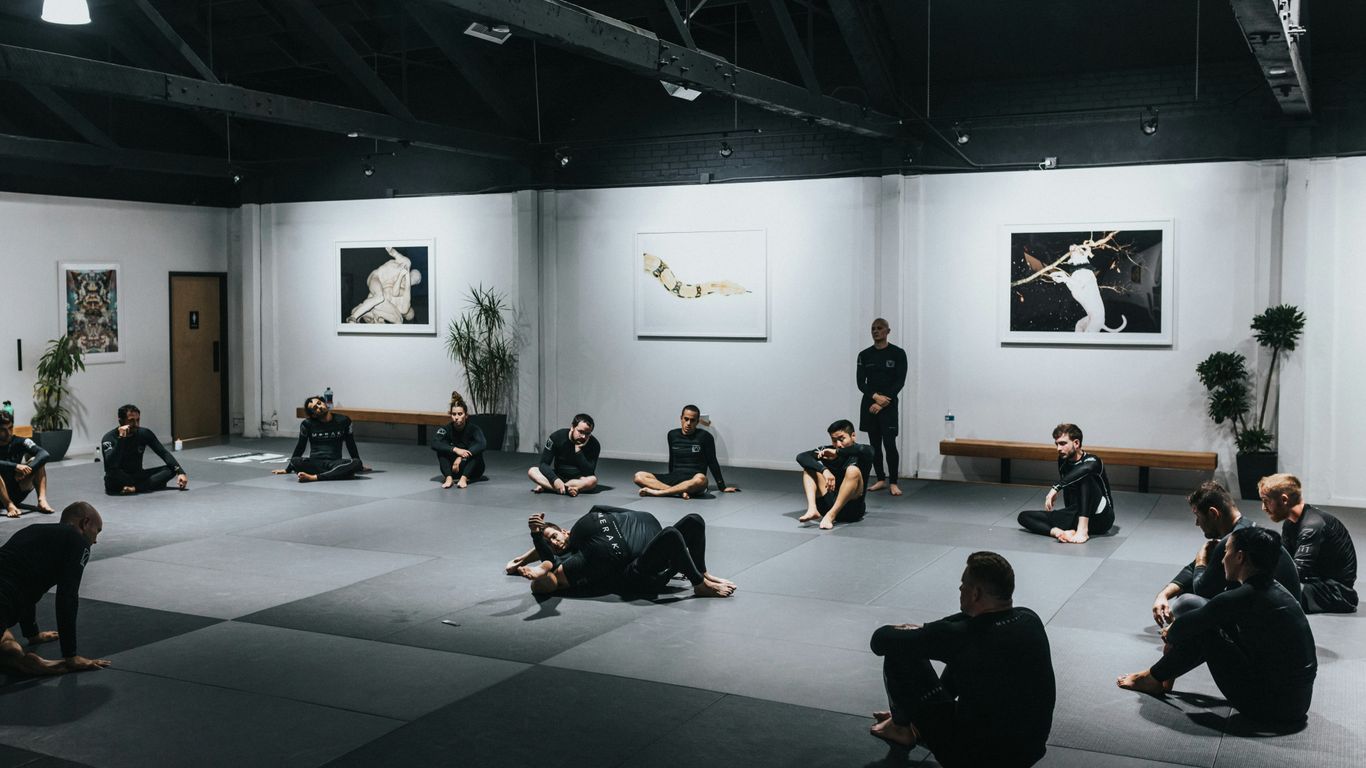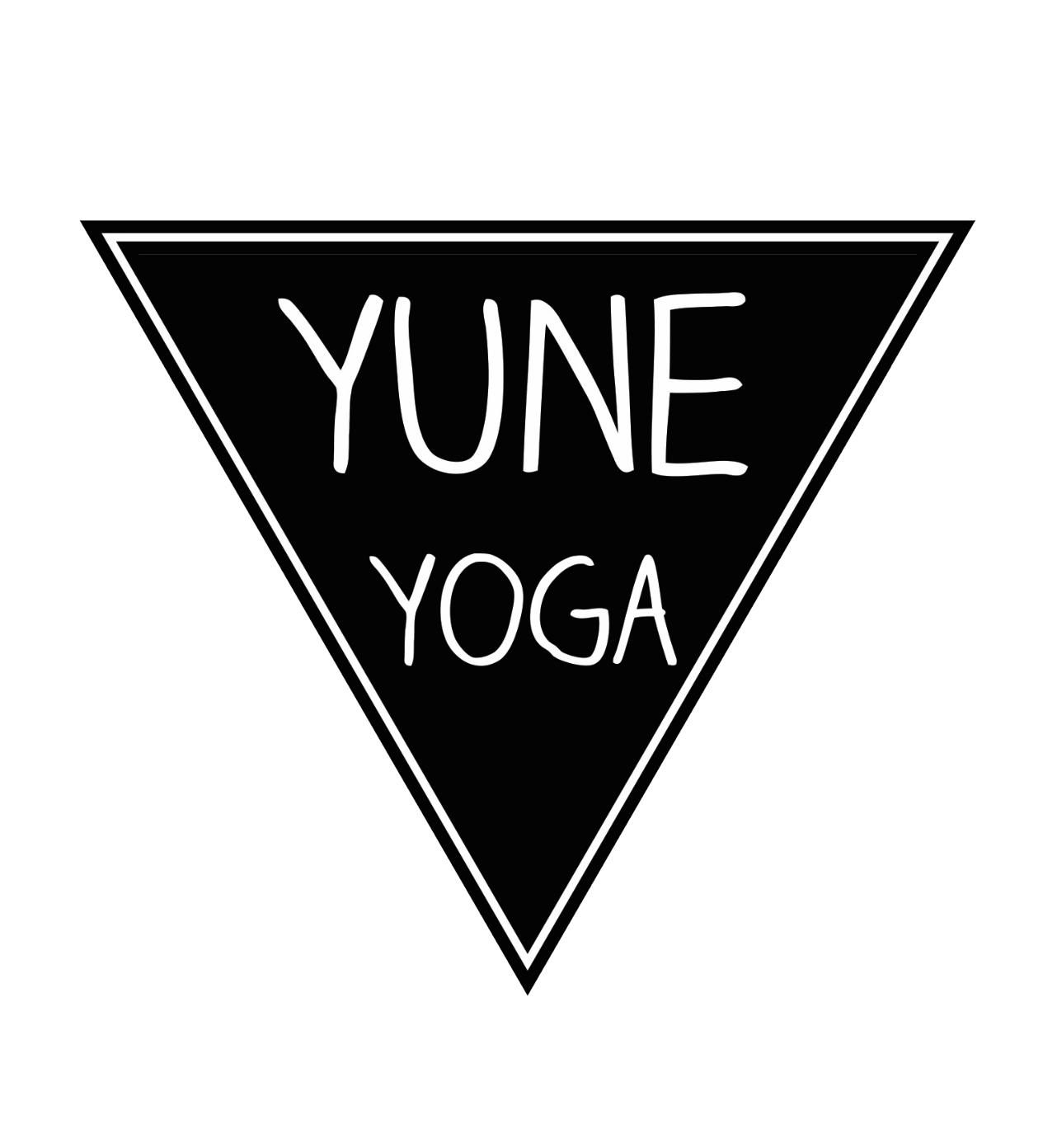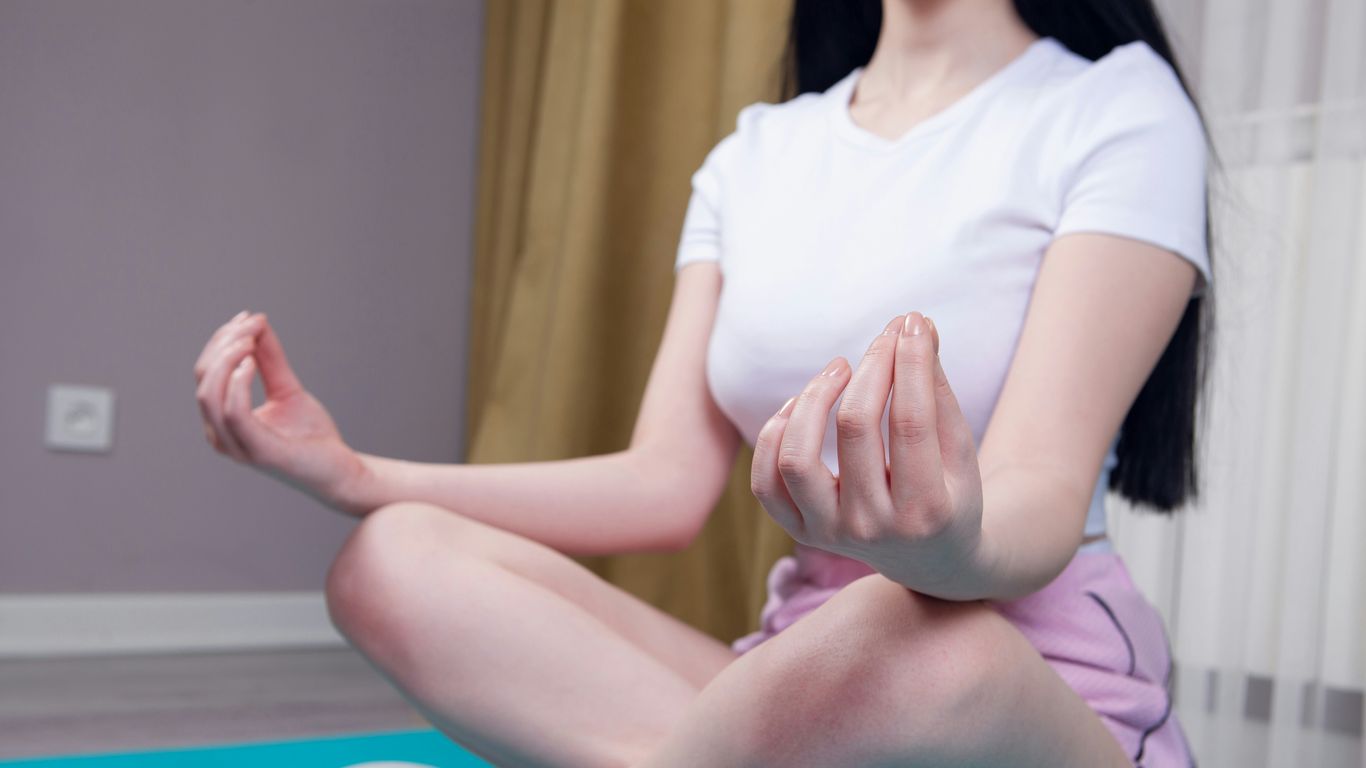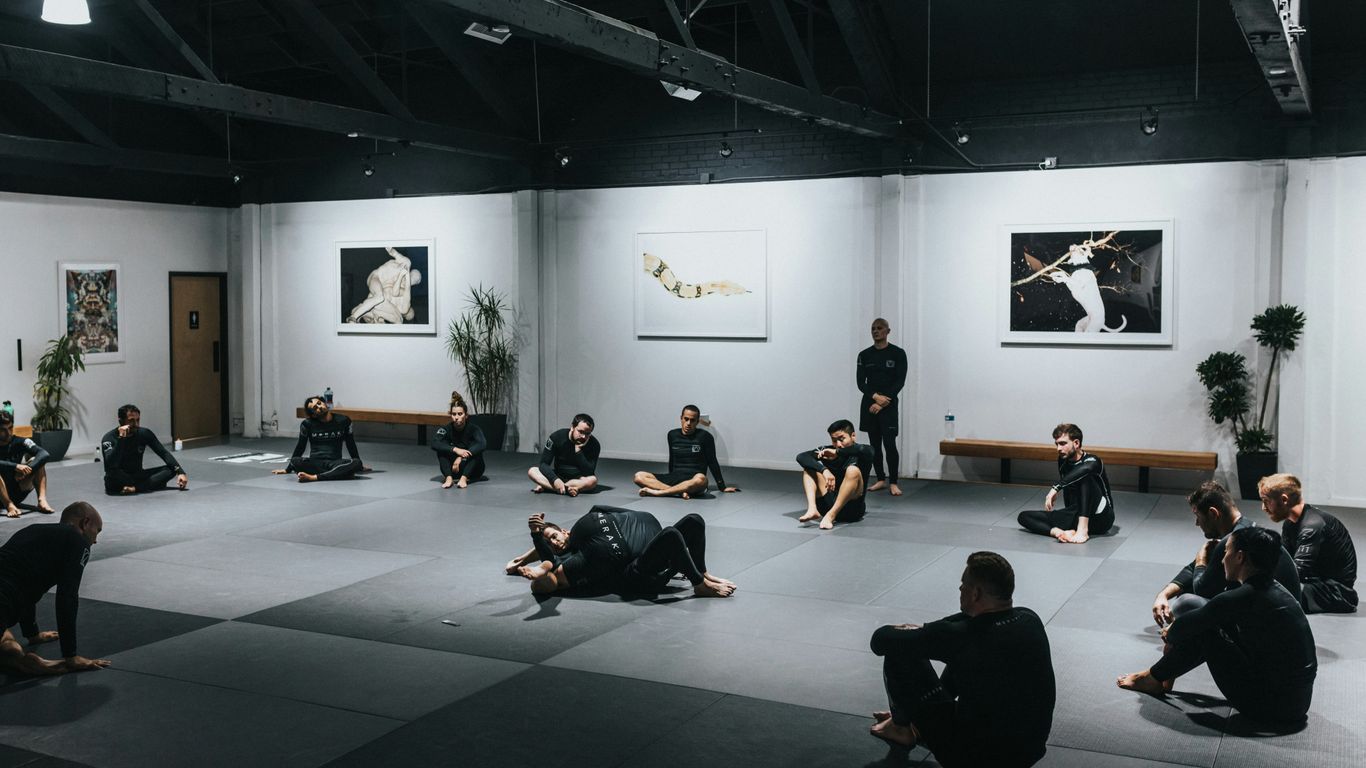
How to Choose the Right Beginners Yoga Course: A Step-by-Step Guide for 2025
Starting a beginners yoga course can feel a little confusing at first—there are so many options out there, and it’s hard to know where to begin. Maybe you want to get more flexible, manage stress, or just try something new. Whatever your reason, picking the right course can make all the difference. This guide breaks things down step by step, so you can find a class that fits your needs, your schedule, and your comfort zone. Let’s get you started on the mat, one easy decision at a time.
Key Takeaways
- Think about your personal reasons and goals before signing up for any beginners yoga course.
- Compare online and in-person classes to see which fits your lifestyle and learning style best.
- Try out different yoga styles like Hatha, Vinyasa, or Restorative to find what feels right for you.
- Research instructors and studios—look for beginner-friendly teachers, read reviews, and check out their vibe.
- Take advantage of free trials or intro offers, and remember to start with the basics—no need to rush.
Clarifying Your Personal Yoga Goals
Getting started with yoga isn’t just about picking a class off a schedule. If you don’t take a little time to figure out why you want to start, it’s easy to lose motivation. Let’s break this down one step at a time so you know exactly what you want from your yoga journey.
Identifying Motivations for Starting a Beginners Yoga Course
- Think about what made you consider yoga in the first place. Maybe you saw a friend get flexible, or maybe you’ve heard it helps with stress.
- Ask yourself: Do you want to improve your physical health, get better sleep, or just take a break from your busy mind?
- Be honest about what you hope yoga will do for you. It could be purely physical, totally mental, or a bit of both—it’s all valid.
Setting Realistic Expectations for Progress
- Everyone starts at a different level, and trust me, nobody is grading you on how fast you can touch your toes.
- Setting smart, reachable goals can save you from getting frustrated. Don’t expect to stand on your head or twist into a pretzel by week three.
- Here’s a simple way to track progress:
| Goal | Timeframe | Mark of Progress |
|---|---|---|
| Attend class weekly | 1 month | 4–5 classes completed |
| Feel less stiff | 6 weeks | Touching toes easier |
| Sleep improvement | 2–3 months | Falling asleep faster |
Most people notice tiny changes they didn’t expect—maybe a bit more patience, or a feeling of calm at random times.
Recognizing Physical or Mental Health Goals
- Make a list of particular aches, pains, or stress triggers you’d like to tackle. This lets you match yoga styles or teachers to those needs.
- Your goals can be about:
- Managing back or joint pain
- Lessening anxiety or feeling more focused
- Improving strength or flexibility (but starting from wherever you are)
Not only will this help you pick the right class later on, but it’ll also be a comfort when you feel stuck. The reasons why you started can keep pushing you forward—even on days when sitting on the mat sounds more appealing than any pose.
Deciding Between Online and In-Person Beginners Yoga Courses

Choosing how and where you practice yoga for the first time matters more than you might think. Both online and in-person yoga have their fans, and both styles come with challenges, too. Let's break down what to look at when you’re deciding.
Comparing Convenience and Accountability
- Online yoga lets you practice whenever it fits your schedule – you aren’t stuck with a class time.
- In-person classes give you strong accountability – if you’ve signed up, you’re more likely to show up.
- On the flip side: online classes can make it easier to skip or cut corners, while in-person sessions might be tricky if your schedule is packed or you travel a lot.
| Online Yoga | In-Person Yoga | |
|---|---|---|
| Flexible schedule | Yes | Limited |
| Commute needed | No | Yes |
| Commitment | Low | Higher |
Sometimes, the hardest part is just putting your mat down and starting. If you know you need a nudge or do better in a group, in-person might work better for you. But if you hate driving across town, online is tough to beat.
Evaluating the Quality of Instruction and Support
- Online courses offer wide access to teachers, but you might not always get personal corrections or attention.
- In-person teachers can watch your form, give pointers, or suggest adjustments on the spot.
- Some online platforms now have live sessions where instructors interact over video, so you can get some feedback – but it’s not quite the same as someone adjusting your position right there.
Assessing Community and Social Aspects
- Community is a big reason folks stick with yoga. In-person classes make it easy to meet people, chat before or after, and feel part of a group.
- Online classes usually mean you’re alone at home, though many platforms now add group chats or forums for support.
- If you like the buzz of a group, or if you want to make new friends locally, in-person yoga usually feels more rewarding.
- Build connections face to face
- Get support from local teachers
- Stay motivated with a real group vibe
If you decide to practice at home, a good mat truly helps. The Leo Yoga Mat is sturdy, not slippery, and adds a little comfort whether you’re rolling it out in your living room or taking it to a studio. Either way, just find something that helps you actually look forward to getting on the mat.
Evaluating Different Yoga Styles for Beginners
Choosing your first yoga class can get overwhelming with all the different types and weird names. The trick is matching your attitude, goals, and body to the style that makes you feel good about coming back. Let’s break down the basics in a way that makes it all less confusing.
Understanding Hatha, Vinyasa, and Slow Flow
Most yoga beginners end up trying Hatha, Vinyasa, or Slow Flow at some point. Each comes with its own mood and focuses. Here’s an easy table that compares them side by side:
| Style | Pace | Focus | Best for |
|---|---|---|---|
| Hatha | Slow | Basic poses, breath | Learning foundations |
| Vinyasa | Medium | Movement, energy | Building up stamina |
| Slow Flow | Gentle | Flow & alignment | Nervous newcomers |
- Hatha: Poses are simpler, held for longer, and you’ll have plenty of time to learn proper form.
- Vinyasa: Moves faster, connecting each posture with breath—some days, this feels more workout-y.
- Slow Flow: Kind of a mix, but gives more time between transitions. Great for people worried about keeping up.
Don’t be afraid to start with the slowest option. Learning the basics slowly sometimes means making fewer mistakes.
Exploring Gentle Options Like Yin and Restorative Yoga
Not every beginner needs (or wants) an active style. There’s a whole world of yoga that focuses on slowing down and relaxing:
- Yin Yoga: Long, deep stretches, holding each pose for several minutes. It’s all about flexibility and quieting your mind.
- Restorative Yoga: Using props like cushions and blankets, you rest and relax for extended periods. Sometimes you’ll barely move, but that’s the point.
- Gentle/Chair Yoga: Super accessible, especially if you have joint pain or find getting up and down from the mat tough.
These classes often have a calming vibe. They work well if you want to recover, reduce stress, or simply stretch out after sitting all day.
Matching Intensity and Pace to Your Needs
Different days, different needs. Think about:
- How much movement do you want? (Not much? Try Restorative or Hatha.)
- Do you want to build strength, stretch, or just relax?
- Do you have any aches, old injuries, or mobility issues?
It’s totally normal to test out a few types until something clicks. Starting slow doesn’t mean you can’t try something energetic later—or switch between styles depending on your energy level. Yoga isn’t about being perfect or picking the "right" style from the start. Find what feels okay for where you’re at right now. The rest falls into place over time.
Researching and Comparing Beginners Yoga Course Providers
Choosing the right provider isn't just about picking the first name you see in a search. There are a few steps that make the whole process a lot less confusing when you start breaking them down. Let me walk you through what works, from tech tricks to old-fashioned review hunting, and how to actually use what you find.
Leveraging Search Engines and Yoga Apps
If you're new to yoga, the internet is your biggest tool (after your mat). Instead of just going for the first studio you see, try:
- Typing precise search terms like "beginner yoga near me" or "intro yoga class your town".
- Checking yoga apps—platforms like Mindbody, ClassPass, and even Google Maps let you filter classes by level, location, and time. You’ll spot:
- Real-time class options with basic info
- Single-session prices and new student deals
- Instructor bios and sometimes studio videos
- Ratings side by side with scheduled times
- Listing your top picks to compare them at a glance—bonus points if you organize your choices in a quick table:
| Studio Name | Distance | First-Class Price | App Rating |
|---|---|---|---|
| Peaceful Lotus | 1.2 mi | $10 | 4.9 |
| Urban Bliss Yoga | 2.0 mi | $12 | 4.7 |
| Yoga Roots Hub | 2.7 mi | $15 | 4.6 |
Taking a few minutes to set up a shortlist helps avoid last-minute regret or a feeling like you just paid too much for something you didn’t actually want.
Using Social Media and Online Communities for Insights
Social media is more than memes—it’s where people spill honest details. Here’s how to use it for yoga research:
- Join your area’s yoga Facebook groups or search hashtags (#beginnergainville, etc.).
- Scroll for posts with newbie advice, or studios promoting their beginner-friendly sessions.
- Check for special events or free trial invites in stories or group threads. Sometimes, that’s how you stumble into a great space before it’s crowded.
A lot of community-based tips come up in comments, so don’t be shy about asking for honest feedback or recommendations. You might even spot online training comparisons, like what you’ll find with Yoga Alliance class formats—these details can show what’s trending or offer price points for online options.
Reading Reviews and Testimonials
Want the real scoop? Reviews save you some trial-and-error. Here are a few things to watch for:
- Mention of "beginner-friendly" or "supportive for new students"
- Comments about the studio vibe, from strict to super warm
- Repeated shoutouts for clean mats or thoughtful perks (like free props or water)
- Complaints—are they about tough poses or the front desk? It matters!
Here’s a quick checklist to guide your review scanning:
- Look at at least three different review sites (Google, Yelp, Facebook)
- Check the most recent ratings (past 6 months)
- Scan for patterns—one bad day is different from 10 bad Mondays
Actual reviews from everyday folks are the best way to judge whether a studio will feel welcoming, especially if you’re a little nervous about starting.
The whole process isn’t about overthinking, but taking a little time to get honest info. You deserve a beginner yoga class that fits—not one that just looks good in ads. When in doubt, trust a mix of tech, social proof, and your own gut feeling.
Assessing Yoga Instructors and Studio Qualities
So, you've decided to try yoga. Next thing you know, you're scrolling through endless profiles and studio websites, hoping to spot someone or someplace that just feels right. Picking the right teacher and studio isn't always simple, but paying attention to a few clues can make a big difference in how comfortable and supported you’ll feel from day one.
Checking Certification and Experience with Beginners
A solid yoga instructor isn’t just flexible — they’ve put in the work to get certified and know how to look after beginners. Here’s what to watch for:
- Look for an instructor with an RYT 200 or 500 certification (Registered Yoga Teacher hours matter).
- Ask directly about their experience: How long have they been teaching? Do they focus on working with newcomers?
- Don’t be shy about browsing their background — sometimes teacher bios or a quick scroll through their social media can give you a sense of their personality and supportiveness.
- If you’re still unsure, understanding how yoga training works can help you identify quality instructors.
Meeting a teacher who is patient and welcoming can really shape your first experiences with yoga — everyone deserves to feel seen and included, even if you don’t know a single pose.
Observing Teaching Style and Patience
Every instructor brings their own flavor, but for beginners, patience is huge. Notice the way they explain things:
- Do they break down postures in a simple, light way without sounding annoyed by questions?
- Are modifications and props encouraged to help everyone find comfort?
- Is the vibe in class calm or pressured?
It’s not always about the fanciest poses. A teacher who checks in, repeats instructions, and welcomes mistakes honestly stands out.
Considering Atmosphere and Studio Amenities
Studios aren’t all the same. Sometimes, it’s the little things that make or break your comfort level. Here’s a quick comparison table for evaluating studios:
| Studio Name | Clean? | Light? | Spacious? | New Beginner Deals? | Avg Class Size |
|---|---|---|---|---|---|
| Peaceful Lotus | Yes | Yes | Yes | $10 first class | Small |
| Urban Bliss Yoga | Yes | Yes | Some | $12 first class | Medium |
| Yoga Roots Hub | Yes | No | Some | $15 first class | Larger |
- Aim for a clean, well-lit room; good lighting can make you feel more at ease.
- Good studios give everyone enough room. Overcrowded classes? Not a great choice for learning.
- Check if they throw in perks like free water, loaner mats, or intro bundles for new folks.
Sometimes it helps to remember, your gut knows before your brain does. Test out a class or two, chat with some staff, and don’t be shy about asking questions. If the studio or teacher doesn’t feel welcoming, trust yourself and keep looking. You don’t need to settle—there’s definitely a community that fits your vibe out there.
Understanding Pricing, Packages, and Introductory Offers
Starting yoga shouldn’t be all about high costs—there are plenty of ways to begin without draining your wallet. Before signing up, it makes sense to check out the price differences between studios, community centers, and even fitness clubs. Take a look at the options below so you know what to expect and where you’ll get the most for your money.
| Facility Type | Avg. Drop-In Price | Intro Offers | Community Vibe |
|---|---|---|---|
| Boutique Studio | $20 - $35 | Yes | Often intimate |
| Fitness Center | $8 - $15 | Sometimes | Usually casual |
| Community Center | $5 - $12 | Sometimes | Relaxed |
| Donation/Free Class | Pay what you can | N/A | Welcoming |
Evaluating Class Passes, Drop-In Rates, and Memberships
- Drop-in classes can help if you want to try different places without committing.
- Class packs (like 5 or 10 classes at a time) bring the per-class price down if you know you’ll go more than once.
- Unlimited monthly memberships are pricier up front but usually save money if you plan on regular sessions.
- Some gyms and rec centers include yoga with the general membership, so you may already have access.
Taking Advantage of Free Trials or Community Classes
- Look for intro deals such as a free first class, or a week of unlimited attendance at a discount.
- Many studios have monthly promos and occasionally offer pay-what-you-can or free community events.
- Trying a few different locations can give you a sense of what you like before spending big on a single studio. For those curious about other costs, especially for teacher training, program price examples can help you set long-term expectations.
Factoring in Equipment and Additional Costs
- Some studios include use of mats or blocks, but many expect you to bring your own or pay a small rental fee.
- If you buy a mat, prices range from $20 to $60 depending on quality.
- Don’t forget extras—like water, towels, or even transportation—especially if you’re going to classes across town.
Yoga doesn’t have to be expensive, but costs can creep up if you’re not careful. Keep an eye on starter specials, and don’t be shy about asking for deals—studios want you in the door and are sometimes flexible, especially for beginners.
Preparing for Your First Beginners Yoga Course
Getting ready for your first beginners yoga course can feel nerve-wracking, but a little preparation goes a long way toward making things easier. Being prepared helps you focus on the class itself instead of little worries. Let’s break down what you’ll need and what the experience is really like.
Choosing the Right Yoga Mat and Props
The right mat makes a noticeable difference in comfort, grip, and how secure you feel—especially as a beginner.
- Look for extra cushioning (about 6mm is great) to protect knees and wrists.
- Non-slip surfaces are more reliable during balance poses and slow flows.
- Props like blocks, straps, or even a yoga towel come in handy for support, especially in gentle or restorative classes.
- Some studios provide props, but bringing your own basic set (mat and strap) is wise for hygiene and consistency. For example, a mat like the Janet Yoga Mat 6mm Non-Slip Gray offers extra padding without feeling bulky, good for both group and home practice.
| Item | Why You Might Need It |
|---|---|
| Thick non-slip mat | Comfort and stability |
| Yoga blocks | Brings the floor closer to you |
| Yoga strap | Helps with gentle stretching |
| Towel | Keeps hands and mat dry |
Understanding Class Etiquette and What to Expect
It’s normal to feel a bit lost the first day, but every beginner’s class is built for newcomers. Here’s what typically happens:
- Arrive 10–20 minutes early so you can meet the teacher, ask questions, and get settled.
- Take shoes off before entering; sometimes socks, too.
- Find a spot in the room, lay out your mat, and sit quietly or stretch while others arrive. Many studios keep a calm, quiet mood before class.
- If you have any injuries or concerns, quietly let the teacher know before things start.
- The teacher will walk everyone through breathing, gentle warm-ups, and beginner poses. Your class might end with relaxation—sometimes in silence, sometimes with a guided cool-down.
- Be respectful: stay off your phone, and listen for cues about talking, storage, and props. When in doubt, keep your voice soft and watch how the group moves.
Expect to feel unsure during your first session, but remember—no one is looking at you except the teacher, and their job is to support, not critique.
Building a Supportive Routine and Staying Motivated
Starting something new means developing habits and building confidence. Don’t stress—it’s about steady progress, not perfection.
- Set a realistic schedule (even 1–2 sessions per week is a strong start).
- Find a yoga buddy or join the studio’s chat or community board for support. New faces are always welcome in beginner yoga.
- Track small wins—like holding a pose longer, feeling calmer, or sleeping better after class.
- On days you feel discouraged, remind yourself: everyone starts at zero. Progress is measured in weeks, not minutes.
Some quick tips to keep you on track:
- Pack your mat, water, and comfy clothes the night before.
- Use a basic notebook or app to jot notes about classes, new poses, or how you feel post-class.
- Celebrate the little stuff—the hardest part is showing up, and you’ve already done that.
Finding your rhythm takes time, but each session gets a bit easier and feels less awkward. Trust yourself to learn at your own pace and enjoy the new experience.
Conclusion
Alright, so if you’ve made it this far, you’re probably ready to roll out a mat and give yoga a real shot. Picking the right beginner yoga course isn’t about finding the fanciest studio or the most popular online class—it’s about what feels right for you. Maybe you want something slow and gentle, or maybe you’re itching to move a bit more. Either way, don’t stress about getting everything perfect from the start. Try a few classes, see which teachers click with you, and don’t be afraid to switch things up if something doesn’t fit. Everyone starts somewhere, and honestly, most people in beginner classes are just as unsure as you. The most important thing is to keep showing up, even if you wobble or forget a pose. Over time, you’ll find your rhythm, maybe even make a few friends, and start to notice those little changes in how you feel. So go ahead—pick a class, show up, and see where it takes you. Yoga’s not about being perfect; it’s about giving yourself a chance to feel good, one class at a time.
Frequently Asked Questions
How do I know which yoga style is best for beginners?
Start by looking for classes labeled as Hatha, Gentle, or Slow Flow. These styles move at a slower pace and focus on basic poses, making them perfect for people new to yoga. If you want a calming class, Yin or Restorative yoga are also great choices.
Should I choose online or in-person yoga classes as a beginner?
It depends on your lifestyle and comfort. Online classes are super convenient and let you practice at home, while in-person classes offer more hands-on help and a chance to meet other beginners. Try both if you can, and see which one feels better for you.
What should I look for in a yoga instructor for beginners?
Pick an instructor who is certified and has experience teaching beginners. They should be patient, explain things clearly, and make you feel welcome. You can check their reviews online or even watch a sample class if it’s available.
How much should I expect to spend on beginner yoga classes?
Prices can vary a lot. Some places offer free trials, community classes, or intro deals. Single classes might cost $10–$20, but packages or memberships can save you money if you plan to go often. Don’t forget to factor in the cost of a yoga mat or props if you need them.
What do I need to bring to my first yoga class?
You’ll need a yoga mat, comfy clothes you can move in, and a water bottle. Some studios provide mats and props, but it’s a good idea to check ahead. Bring an open mind and don’t worry about being perfect—everyone starts somewhere!
How can I stay motivated to keep practicing yoga as a beginner?
Set small, realistic goals and celebrate your progress, even if it’s just showing up. Try different teachers or styles to keep things interesting. You can also join with a friend or sign up for a beginner series to help you stick with your routine.


